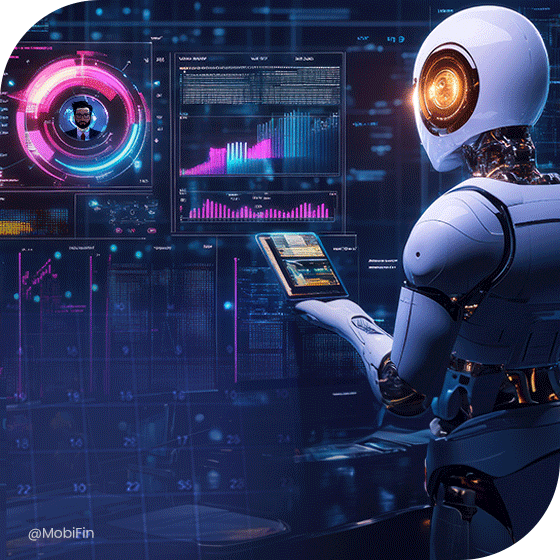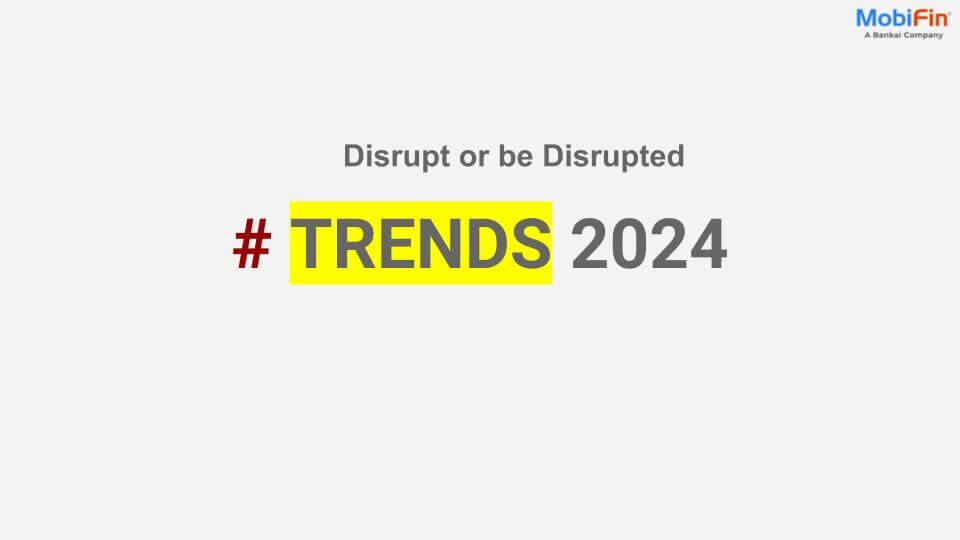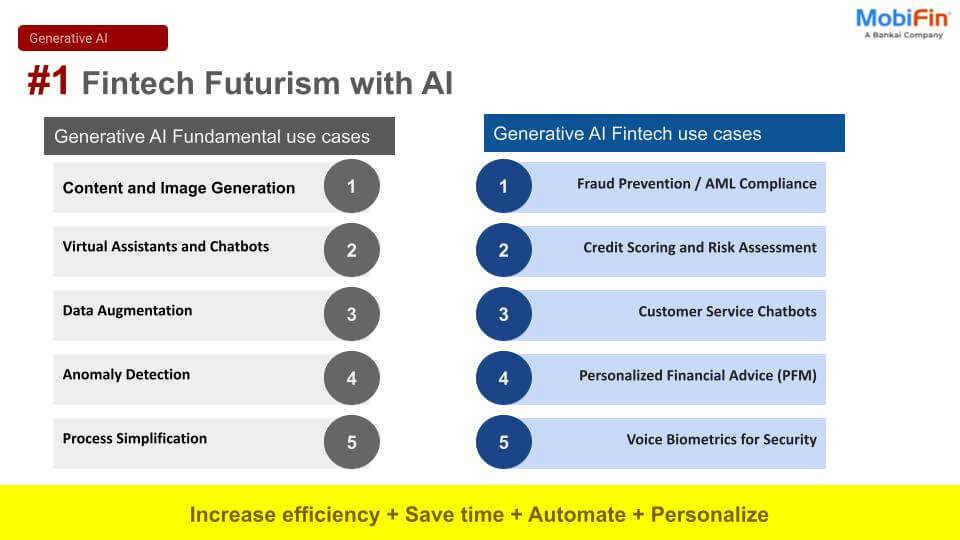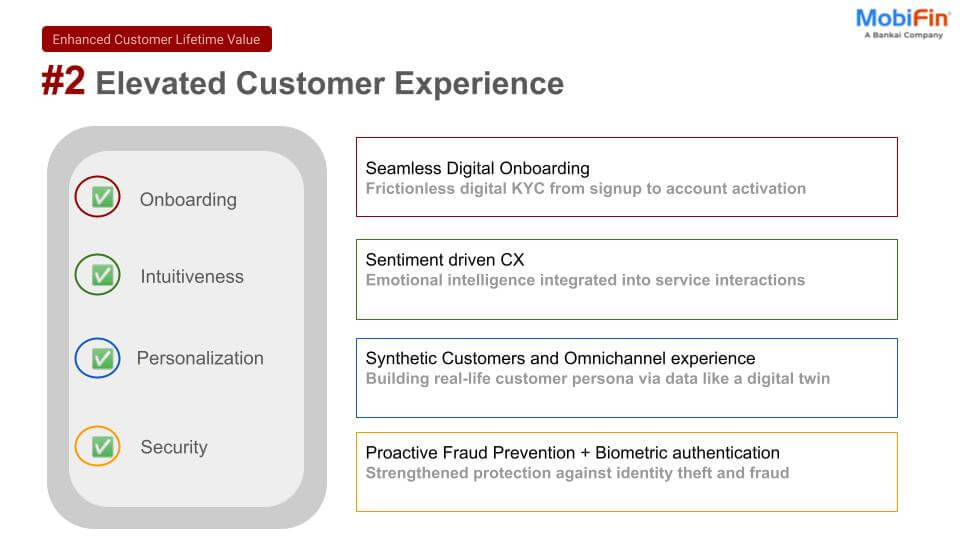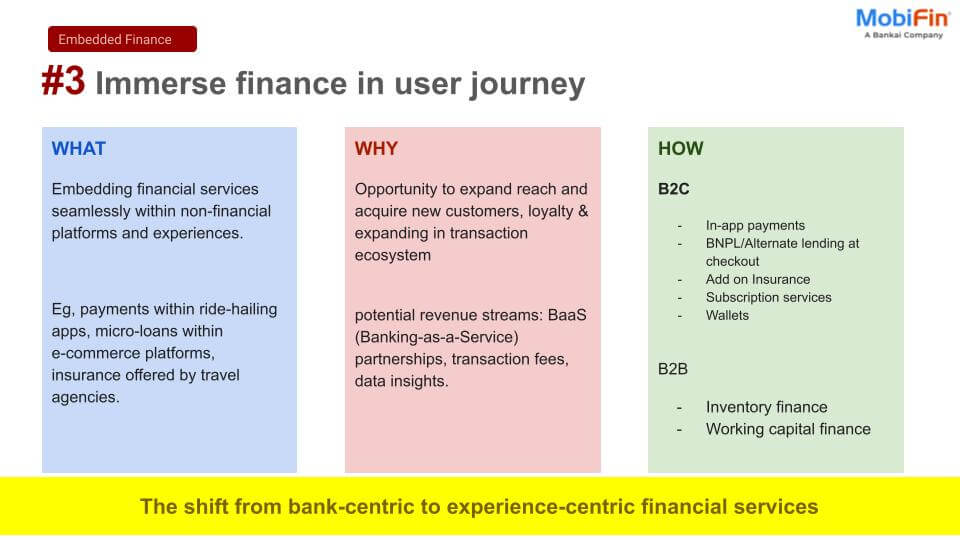Loan origination and management systems (LOMS) have emerged as indispensable tools, streamlining the entire loan lifecycle from application to disbursement and transforming how lending is done.
Loan origination system (LOS)
The LOS streamlines the loan application and approval process, from initial submission to final decision. It automates tasks like data collection, credit scoring, and document verification, making the process faster and more efficient for both lenders and borrowers.
Loan management system (LMS)
The loan management system manages loans after they have been originated. It helps lenders track loan performance, manage collections, ensure compliance, and generate reports for analysis. By automating these tasks, LMS improves overall loan portfolio efficiency and profitability.
The future of digital lending lies in comprehensive loan origination and management systems (LOMS) that leverage decision engines to automate and optimize various processes. Decision-based engines play a crucial role in automating and optimizing various processes, from loan application assessment to risk evaluation and post-disbursement management.
By leveraging data-driven insights and advanced algorithms, these engines enable lenders to make more accurate and efficient decisions, ultimately improves customer satisfaction, reduces operational costs, and drives sustainable growth.
Understanding decision engines
Decision engines are the essential components of digital LOMS. They are designed to automate the decision-making process, streamline loan applications, and ensure consistent, efficient outcomes.
By leveraging advanced technologies, these engines evaluate:
- Credit score and history: Analyzes the borrower’s past credit behavior and current credit score to predict future repayment.
- Income and employment status: Verifies the borrower’s income levels and employment situation to assess their ability to repay.
- Debt-to-income ratio: Evaluates the proportion of the borrower’s monthly income that goes towards debt payments, helps to determine their capacity for additional debt.
- Assets and collateral: Assesses the borrower’s assets that can serve as collateral, provides security for the loan.
- Economic conditions: Considers prevailing economic factors such as interest rates and market trends that could impact the borrower’s ability to repay.
- Alternative data sources: Utilizes non-traditional data such as utility payments, rental history, and social media activity to assess borrowers without extensive credit histories.
- Fraud detection: Employs algorithms to identify potentially fraudulent activities by analyzing patterns in real-time data.
- Regulatory compliance: Ensures that all lending decisions comply with relevant legal and regulatory requirements, including data protection laws.
- Risk assessment models: Uses predictive analytics and machine learning models to assign risk scores based on various financial.
- Personalized credit offers: Tailors loan offers to individual borrowers based on their unique financial profiles and needs, enhancing customer satisfaction.
- Open banking data: Incorporates data shared through open banking platforms for a more comprehensive view of the borrower’s financial situation.
Building blocks of decision engines
Decision engines rely on a powerful combination of data, rules, algorithms, and more to make informed decisions in LOMS. Here is a quick look at them:
- Data intake engine: Integrates data from multiple sources, including third-party data providers, to gather essential information such as credit scores, employment verification, and financial statements. It ensures that all relevant data is available for analysis.
- Core decision and scoring engine: Uses algorithms and scoring models to evaluate creditworthiness based on various criteria like credit history, income, and debt-to-income ratio. It calculates risk scores and determines eligibility for loan products.
- Business rules engine: Applies predefined rules and logic to the data processed by the decision engine. It uses if-then statements and complex conditions to automate decision-making processes, ensuring that decisions are consistent with the institution’s policies.
- Algorithms: Processes data and applies rules using mathematical models. They use statistical techniques and machine learning to analyze data, identify patterns, and predict outcomes. Common algorithms used in decision engines include regression analysis, decision trees, and neural networks.
- Predictive analytics and machine learning models: Utilizes historical data to predict future behaviors, such as the likelihood of default. They help in assessing risk more accurately and tailoring loan products to meet specific customer needs.
- Workflow automation: Automates various stages of the loan origination process, routes applications through different stages based on predefined criteria. It reduces manual intervention and speeds up the approval process.
- Enterprise system integration: Integrates with other enterprise systems to facilitate seamless data flow and application processing. This integration supports actions such as identity verification and document collection.
- Regulatory compliance framework: Ensures that all decisions comply with legal and regulatory standards, adapts to changes in regulations as needed.
- Alternative data sources: Incorporates non-traditional data such as social media activity, utility payments, and rental history to assess borrowers without extensive credit histories.
- Open banking integration: Allows customers to share their financial data with third-party providers for better loan terms and rates, enhances personalization of credit offers.
Key benefits of using decision engines in LOMS
Decision engines equipped with advanced analytics have emerged as a game changer in the lending industry. As lenders are constantly looking for innovative solutions to improve their operations and make more informed decisions, decision engines rise up to the occasion, providing lenders several benefits:
- Increased speed and efficiency: Automates the loan origination process, significantly reduces the time required to process applications. This leads to faster approvals and disbursements, enhances customer satisfaction and gives lenders a competitive edge.
- Improved accuracy and consistency: Utilizes advanced algorithms and data analytics, decision engines minimize human errors and ensure consistent application of lending criteria across all decisions. This uniformity helps mitigate biases and enhances the reliability of credit assessments.
- Cost reduction: Automates the decision-making process and reduces operational costs by decreasing the need for extensive manual processing and IT support. This cost-effectiveness is especially beneficial in managing varying application volumes without additional resources.
- Enhanced risk management: Incorporates predictive analytics and machine learning to assess risks more accurately, allows lenders to tailor loan products to specific customer needs that minimize default risks.
- Regulatory compliance: Ensures all decisions comply with internal policies and external regulatory standards, provides full transparency and traceability of decision-making processes.
- Scalability: Handles large volumes of applications efficiently, makes solutions that adapt to changing market conditions without compromising service quality.
- Fraud detection: Identifies indicative patterns of fraudulent activity by analyzing vast amounts of data in real-time, thereby safeguards both lenders and borrowers.
- Enhanced customer experience: Provides quick responses and reduces waiting times, decision engines improve customer satisfaction. They also allow for personalized loan offers based on individual financial profiles.
- Flexibility and adaptability: Adjusts decision rules and strategies for business users in response to market changes without complex coding, ensures that institutions remain agile.
Key use cases of decision engines in LOMS
Decision engines offer a wide range of applications that help lenders assess the borrower as well as the loan across different parameters. These powerful tools empower lenders to make more informed decisions, streamline operations, and enhance customer experiences. Here are some key use cases:
- Automated credit evaluation: Automate the assessment of credit applications by integrating with various data sources to evaluate credit scores, income, employment status, and other financial indicators. This automation speeds up the decision-making process and reduces manual errors.
- Underwriting process: Underwrite process by automatically retrieving and analyzing necessary documents such as bank statements, tax returns, and employment verification. This ensures a thorough evaluation of the borrower’s creditworthiness.
- Risk assessment and management: Use predictive analytics and machine learning models to assess risk factors associated with lending. They provide insights into potential default risks, allowing lenders to make informed decisions.
- Regulatory compliance: Ensure that lending decisions comply with relevant legal and regulatory standards by executing predefined business rules that align with current regulations.
- Fraud detection: Analyze patterns in application data, decision engines can identify potentially fraudulent activities, thereby protecting both lenders and borrowers from fraud risks.
- Personalized loan offers: Enable lenders to tailor loan products to individual borrower profiles by evaluating comprehensive data sets. This personalization improves customer satisfaction by offering terms that best fit the borrower’s needs.
- Workflow automation: Streamline various stages of the loan origination process, from initial application to final approval, reduces processing times and improves operational efficiency.
- Real-time decision making: Provide real-time assessments and decisions on loan applications, enhances the speed and responsiveness of financial institutions in meeting borrower demands.
- Integration with third-party data providers: Integrate with external data sources via APIs to validate application data, ensures that all necessary information is accurate and up to date.
- Continuous monitoring and loan management: Monitor loans throughout their lifecycle for compliance and performance management, ensure ongoing risk assessment and management.
Challenges and considerations
Decision engines, while offering significant benefits, present challenges that need to be considered. Hence it becomes important for lenders to understand and carefully consider them to successfully leverage decision engines and maximize their benefits.
- Data quality and integrity: The effectiveness of decision engines heavily relies on the quality and integrity of the data they process. Inaccurate, incomplete, or biased data can lead to flawed assessments and decisions, necessitating robust data governance practices to maintain data quality.
- Interpretability and explainability: Decision engines often use complex algorithms, making it difficult to interpret and explain the rationale behind certain credit decisions. This lack of transparency can pose significant challenges, especially in regulatory environments where explanations for decisions are required.
- Bias and ethical concerns: AI models used in decision engines can inadvertently perpetuate biases present in historical data, leading to unfair or discriminatory lending practices. Ensuring fairness and preventing discrimination requires continuous monitoring and adjustment of these models.
- Regulatory compliance: Adapting decision engines to comply with evolving regulatory requirements is a continuous challenge. Financial institutions must ensure that their systems are aligned with current regulations and can adapt to future changes.
- Integration with legacy systems: Many financial institutions still rely on legacy systems that may not be compatible with modern decision engines. Integrating these engines into existing infrastructures can be complex and costly.
- Cybersecurity risks: As decision engines process sensitive customer data, they are vulnerable to cybersecurity threats. Ensuring robust security measures are in place is crucial to protect data integrity and confidentiality.
- Continuous monitoring and maintenance: Decision engines require ongoing monitoring and maintenance to remain effective. This includes updating algorithms, retraining models to prevent data drift, and ensuring systems are responsive to market changes.
- Balancing automation with human oversight: While automation increases efficiency, maintaining an appropriate level of human oversight is necessary to ensure loan quality and compliance. Striking this balance can be challenging for financial institutions.
To address these challenges, financial institutions must invest in data quality initiatives, establish ethical guidelines, and seek expert guidance for implementation, to ensure effective use of decision-making engines.
Current trends and future outlook
As technology continues to advance, we can expect to see even more innovative applications of decision engines in LOMS. Some potential future trends include:
- AI-driven predictive analytics: Leveraging artificial intelligence to enhance predictive analytics capabilities, decision engines can provide more accurate risk assessments by analyzing vast datasets, including non-traditional data sources like social media and mobile phone usage.
- Real-time loan adjustments: Implementing real-time data analysis to dynamically adjust loan terms, interest rates, and repayment schedules based on the borrower’s current financial situation and market conditions.
- Blockchain integration: Utilizing blockchain technology to enhance security, transparency, and efficiency in the loan origination process. Blockchain can facilitate secure data sharing and streamline verification processes.
- Advanced simulations and what-if analyses: Enabling lenders to perform advanced simulations to test different scenarios and strategies, allowing for better risk management and decision-making.
- Natural language processing (NLP) for document analysis: Using NLP tools to automate the extraction of meaningful information from unstructured data such as business reports and verbal communications, providing a more comprehensive view of a borrower’s financial health.
- Open banking and API integration: Expanding the use of open banking platforms to allow borrowers to share their financial data with third-party providers for more personalized loan offers and better.
- Enhanced fraud detection with AI: Employing AI to improve fraud detection by identifying unusual patterns or anomalies in application data that might indicate fraudulent activity.
- Personalized customer interactions: Using AI-driven chatbots and virtual assistants to offer personalized advice and support based on the customer’s specific financial behavior and needs, enhancing customer experience.
- Low-code/no-code solutions for rapid deployment: Implementing low-code or no-code platforms to enable rapid customization and deployment of decision engines without extensive IT involvement, increasing agility and responsiveness to market changes.
Conclusion
Decision engines are transforming the lending industry by automating and optimizing various processes from loan application assessment to risk evaluation and post-disbursement management, providing intelligent and efficient solutions. By leveraging decision engines, banks and financial institutions leverage data-driven insights and advanced algorithms to make accurate decisions and enhance operations.
As technology continues to evolve, we can expect to see even more applications of decision engines in the domain loan origination and management system driving innovation and improving customer experiences.
At MobiFin, we lead the charge in providing next-gen loan origination and management solution for banks and financial institutions. Our LOMS improves efficiency and cuts down on processing times, enhances data accuracy and decision making, and increases customer satisfaction and loyalty.

